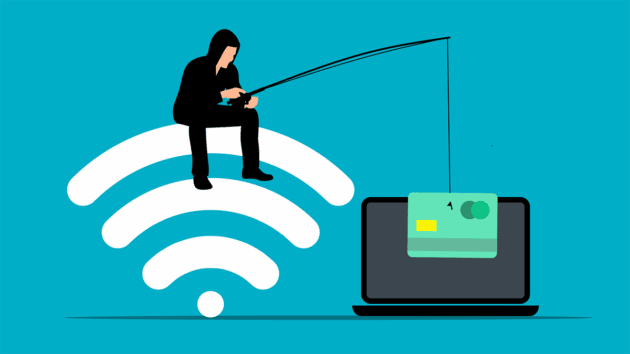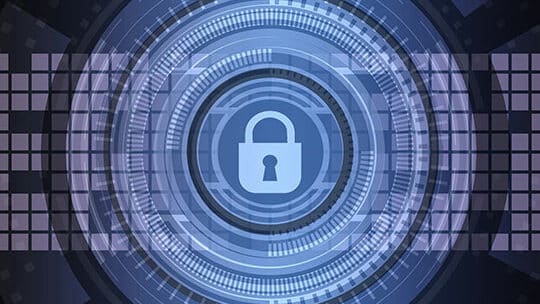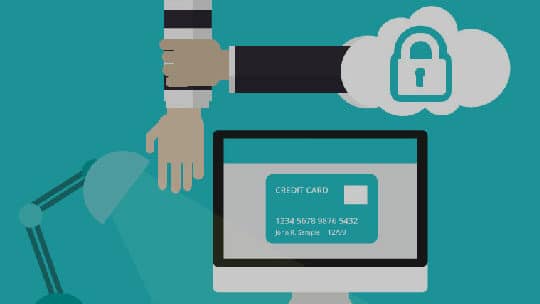In today’s interconnected world, where technology plays a central role in our lives, it’s crucial to be aware of the looming cyber risks that can compromise our digital security. The consequences of falling victim to cyber threats can be severe, ranging from financial loss to identity theft and even emotional distress.
The rise of artificial intelligence (AI) is also an unavoidable reality, bringing both promise and the need for caution regarding its potential misuse as a weapon rather than a protective tool. AI is a reality in cybersecurity, but we must not bypass traditional safeguards, or the risk of AI being used maliciously.
To protect yourself from the ever-evolving threats lurking in the digital realm, it’s imperative to take proactive measures and fortify your defenses. By prioritizing cybersecurity and adopting effective strategies, you can secure yourself against potential cyber disasters and enjoy a worry-free online experience.
Understanding the Growing Cyber Threat Landscape

As technology advances, so do the methods employed by cybercriminals. From phishing attacks to ransomware and data breaches, the variety and sophistication of cyber threats continue to escalate. The implications of such breaches can be devastating, leading to financial ruin, reputational damage, and emotional distress. It’s crucial to understand the gravity of these risks and their potential consequences to appreciate the importance of being well-prepared.
Related: How to Use Cyber Threat Intelligence to Boost Cyber Security?
1. Phishing attacks
Phishing attacks are deceitful tactics used by cybercriminals to deceive individuals into disclosing confidential information, including passwords, credit card details, and social security numbers. Cybercriminals often disguise themselves as trustworthy entities through emails, messages, or websites. Phishing attacks can result in identity theft, financial loss, and unauthorized access to personal accounts.
2. Ransomware
Ransomware is a dangerous type of malware that infiltrates computer systems and takes control by encrypting files, making them completely inaccessible to the user. It can infiltrate your system through malicious email attachments, compromised websites, or vulnerable software. Falling victim to ransomware can lead to significant financial loss and the potential loss of critical data.
3. Data breaches
Data breaches occur when unauthorized individuals gain access to sensitive information held by organizations. Breached data can include personal information, credit card details, or login credentials. The fallout from a data breach can result in financial loss, reputational damage, and the potential for identity theft.
Stay curious and informed about the evolving cyber threat landscape, so that you can better understand the risks and allocate resources effectively to protect yourself.
Strengthen Your Digital Armor: Best Practices for Cybersecurity

To minimize the chances of falling victim to cyber threats, it’s crucial to implement robust and easy-to-apply security practices. This section will outline essential steps you can take to protect yourself online:
1. Create strong and unique passwords
To create strong passwords, make sure to include a combination of both uppercase and lowercase letters, add in some numbers, and even special characters. Avoid using easily guessable information such as birth dates or sequential numbers. Consider using a password manager to generate and securely store your passwords.
2. Activate two-factor authentication (2FA)
2FA adds a layer of security by requiring a second verification step, such as a unique code sent to your mobile device, in addition to your password. Enable 2FA for your email, social media, and financial accounts whenever possible.
3. Update software and devices
Regularly update your operating system, web browser, and software applications to protect against known vulnerabilities. Enable automatic updates whenever possible to ensure you have the latest security patches.
4. Use a firewall
Enable a firewall on your devices and network to control incoming and outgoing network traffic. A firewall acts as a barrier between your device and potential threats, blocking unauthorized access attempts.
5. Avoiding suspicious links and downloads
Be cautious when clicking on links or downloading files, especially from unknown or untrusted sources. Hover over links to preview the URL before clicking, and only download files from reputable websites.
6. Regularly backing up data
To safeguard your important files, create secure backups and store them on an external hard drive or in a cloud storage service. Regular backups can help you recover your data in case of a cyber-attack or hardware failure.
By following these best practices, you can significantly reduce your vulnerability to cyber-attacks and save yourself from potential financial and emotional distress.
Malware Removal Software: The Guardian of Your Digital Haven

One of the most significant threats in the digital landscape is malware. Malicious software can infiltrate your devices, compromise your privacy, and wreak havoc on your digital life. Investing in reputable malware removal software saves you both time and money. It offers proactive protection against malware, eliminating the need for costly and time-consuming recovery processes. Get acquainted with some of their features and how they work for you:
1. Real-time scanning
Choose malware removal software that can detect and block malware in real-time, providing immediate protection against malicious threats. Real-time scanning continuously monitors your system for potential threats and prevents them from causing harm.
2. Automatic updates
Opt for software that regularly updates its malware definitions to defend against emerging threats effectively. Automatic updates ensure you have the latest protection against the ever-evolving malware landscape.
3. Quarantine and removal capabilities
Look for software that can isolate and remove malware from your system to prevent further damage. The ability to quarantine and remove malware helps protect your files and personal information from unauthorized access. By maintaining the integrity of your digital environment, you can focus on what truly matters and enjoy a seamless online experience.
See also: 17 Cool Tips for Writing a Cybersecurity Policy that Doesn’t Suck.
Cyber-education is Power: Staying Informed and Aware

Knowledge is your greatest weapon against cyber risks. By staying informed about the latest cyber threats, you can better understand the tactics employed by cybercriminals and proactively safeguard yourself. It is important to educate yourself and raise awareness about cybersecurity amongst your family, friends, and employees. Consider the following practices:
1. Stay updated on cybersecurity news
Regularly read reputable sources, such as cybersecurity blogs and news websites, to stay informed about the latest threats and trends. Subscribe to security newsletters and cyber alerts that provide timely information about emerging risks.
2. Enhance your digital literacy
Educate yourself on common attack techniques, such as phishing, social engineering, and malware, to recognize and avoid them. Understand the importance of secure browsing, password hygiene, and safe online practices.
3. Attend cybersecurity webinars or workshops
Participate in online events that provide insights into the evolving threat landscape and effective security practices. Webinars and workshops can offer practical guidance on protecting yourself and your digital assets.
Investing time in cyber education allows you to make informed decisions, save money by avoiding potential scams, and enjoy inner peace knowing you are well-equipped to navigate the digital world.
Building Trust: Safeguarding Personal and Financial Information

Trust is the cornerstone of any online interaction, whether it’s sharing personal information or conducting financial transactions. Consider the following practices to safeguard your information:
1. Utilize secure payment gateways
Look for trusted payment processors that encrypt your financial information during transactions. Secure payment gateways provide an additional layer of protection when making online purchases.
2. Implement encryption protocols
Ensure your communications are encrypted, especially when sharing sensitive data or using public Wi-Fi networks. Look for websites with “HTTPS” in the URL, indicating a secure connection.
3. Practice safe browsing habits
Use reputable web browsers with built-in security features. Avoid clicking on suspicious links or downloading files from unknown sources. Be cautious when sharing personal information online, especially on social media platforms.
By prioritizing trust and taking the necessary steps to protect your personal and financial information, you not only save yourself from potential financial losses but also cultivate a sense of trust within yourself. The knowledge that your information is secure, and your online interactions are protected enhances your overall digital experience and contributes to your peace of mind.
Securing Your Digital Future: Investing in Cyber Insurance

While preventive measures can significantly reduce your exposure to cyber risks, it’s important to acknowledge that no security system is foolproof. Cyber insurance can provide an additional layer of protection by mitigating potential financial losses and assisting in the recovery process after a cyber incident. Consider the following steps:
1. Assess your coverage needs
Evaluate your digital assets and potential risks to determine the appropriate level of cyber insurance coverage. Consider factors such as the value of your digital assets, the sensitivity of the data you handle, and the potential costs of recovery and legal assistance.
2. Research reputable insurance providers
Look for insurance providers with a track record of assisting individuals and businesses in the aftermath of cyber incidents. Read reviews, seek recommendations, and compare policies to find the best fit for your needs.
3. Review policy terms and conditions
Understand what is covered under your cyber insurance policy, including expenses related to data recovery, legal assistance, reputational damage, and potential financial losses. Pay attention to policy limits, deductibles, and any specific exclusions or limitations.
Investing in cyber insurance offers financial protection and peace of mind. In the event of a cyber-attack or data breach, having the right coverage can save you from significant financial burdens and expedite the recovery process.
By securing your digital future with cyber insurance, you can focus on what truly matters in life and embrace a worry-free digital existence.
Related: How to Protect Your PC from Cyber-attacks, Tracking, & Malware?
Conclusion

In the age of digital connectivity, securing yourself against cyber risks is not just an option; it’s a necessity. By adopting a proactive approach to cybersecurity, staying informed, and implementing effective strategies, you can protect your personal and financial well-being, ensuring a worry-free online experience.
Remember, the time and effort invested in fortifying your digital defenses today will save you from potential disasters in the future. Embrace the power of knowledge, stay vigilant, and make cybersecurity a top priority, and you’ll pave the way for a safer and more secure digital future.





